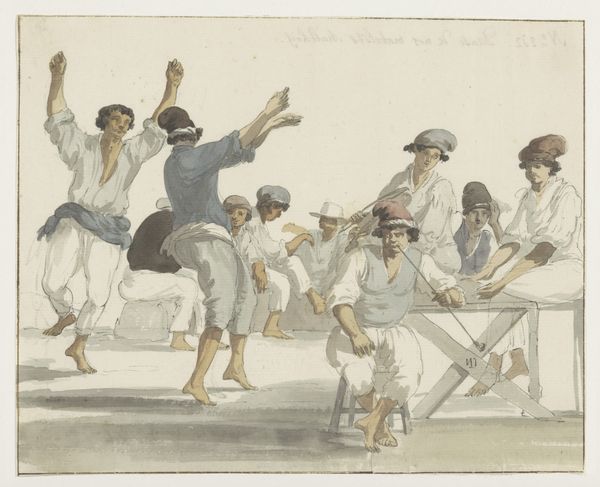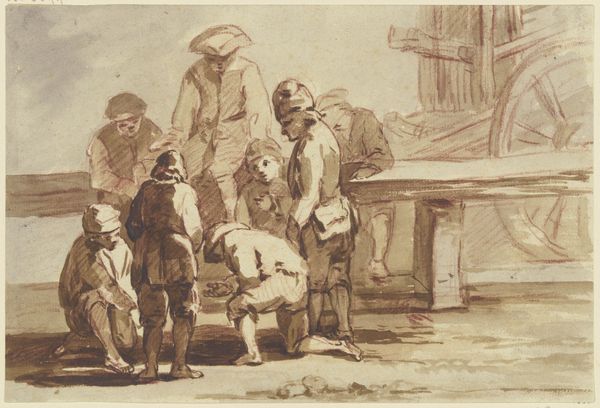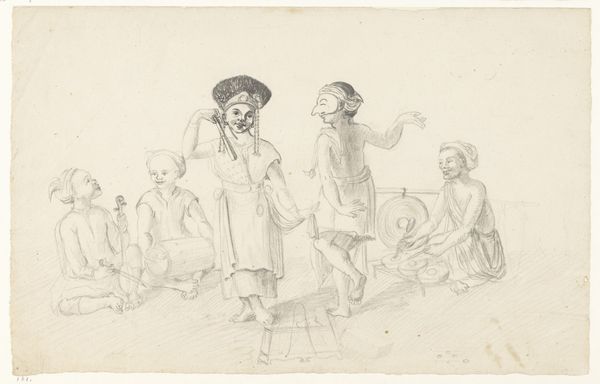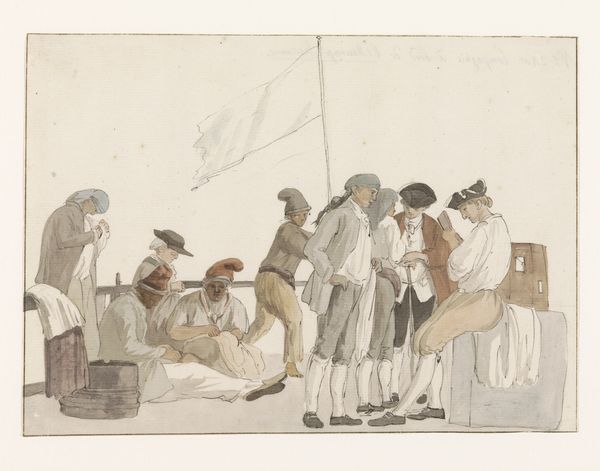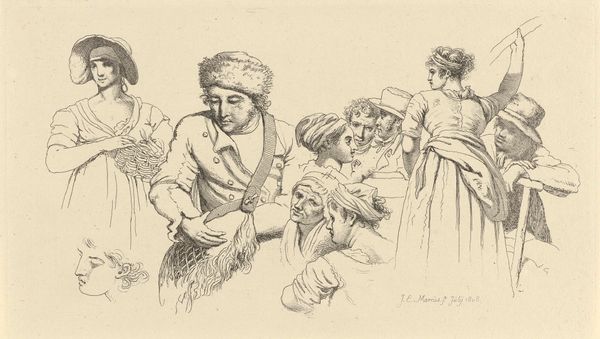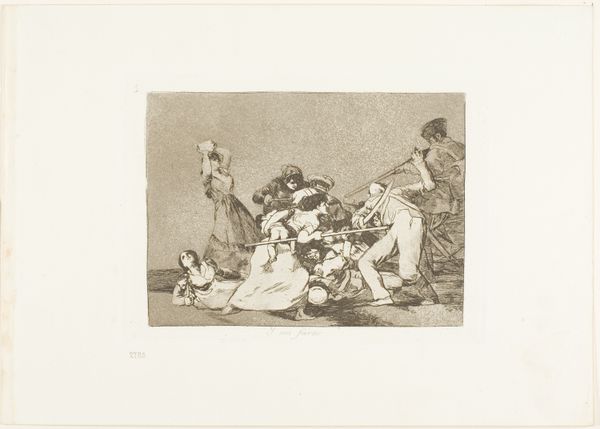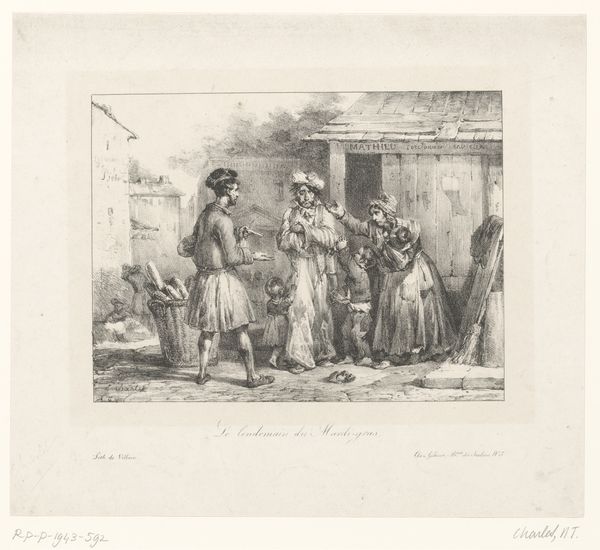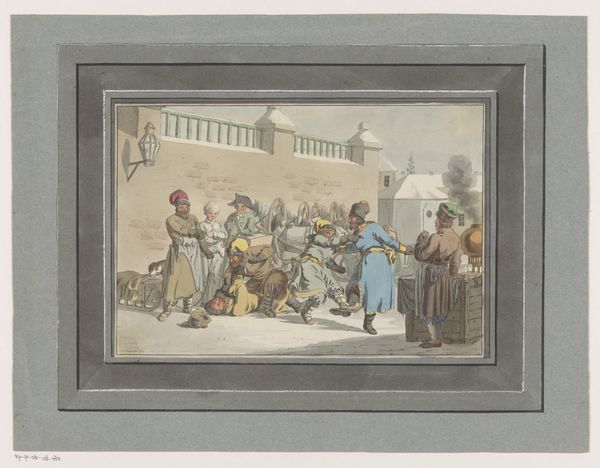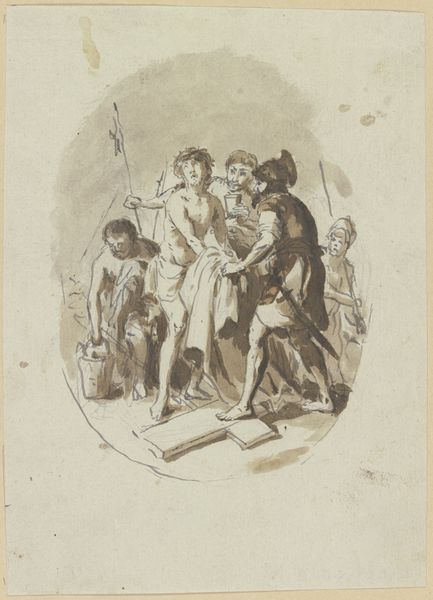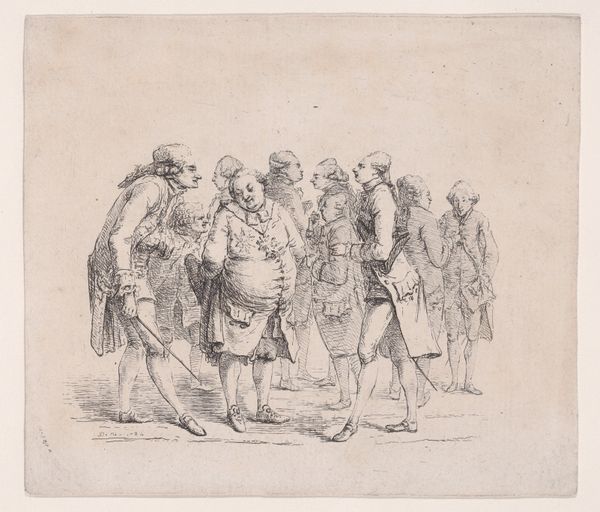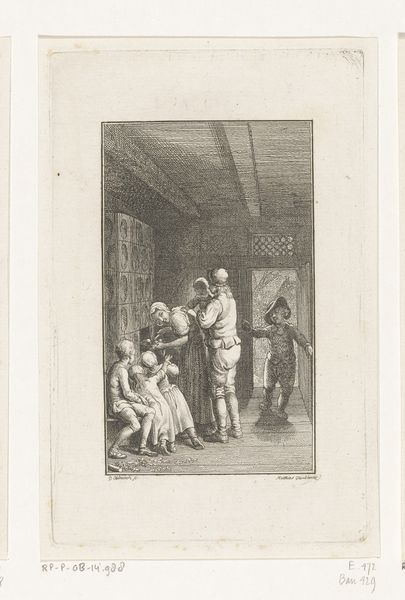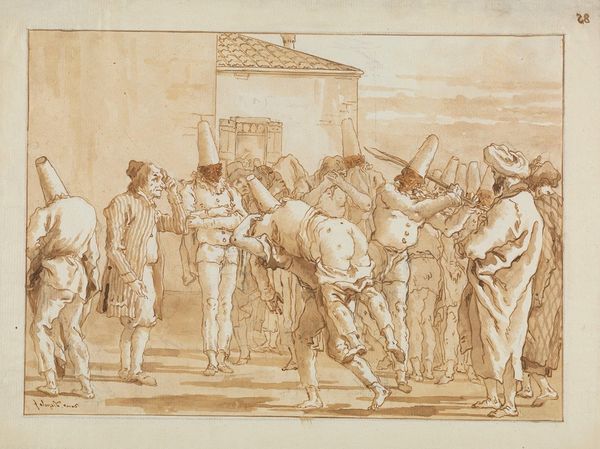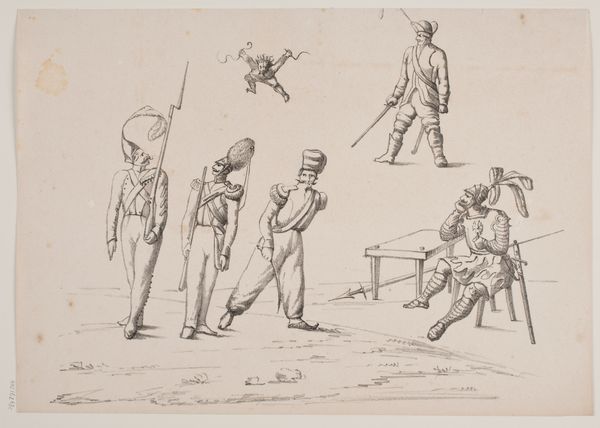
Dimensions: height 185 mm, width 229 mm
Copyright: Rijks Museum: Open Domain
Editor: So, this is "Dance of the Young Men on the Island of Gozo" by Louis Ducros, created in 1778. It's a watercolor and ink drawing on paper. My first thought is how staged the scene appears, despite the supposedly spontaneous dance. What can you tell me about this work? Curator: It is fascinating how Ducros uses this dance as a symbol. These aren’t just boys dancing; they embody a romanticized, perhaps even a colonial, idea of cultural innocence. Notice the distinct figures, especially the one in European dress seemingly observing or even judging. What does that contrast suggest to you? Editor: It does create a strong dichotomy! The European figure almost feels like an intruder, reinforcing a sense of 'us' versus 'them.' It also adds a layer of performance for the viewer's gaze, doesn’t it? Curator: Exactly. The dance becomes a spectacle. Now, think about the setting - Gozo, an island. Islands often function as isolated worlds in the imagination, ripe for projection. Consider how the idea of 'island life' plays into our understanding of otherness and simplicity, ideas romanticized at this time. Does that resonate with the visual elements? Editor: Yes, that makes sense. The limited palette, almost faded, and the way the figures are grouped do contribute to a sense of observing a culture, more than participating. What strikes me now is that it reflects not necessarily reality, but a projected fantasy. Curator: Precisely. Ducros gives us a snapshot of 18th-century European fascination with the exotic, imbued with prevailing social and psychological frameworks. We're not just seeing a dance, we’re seeing a cultural mirror. Editor: I now realize there's a whole story being told here through the details of observation and representation. Curator: Exactly, visual symbols communicate deeply.
Comments
No comments
Be the first to comment and join the conversation on the ultimate creative platform.
